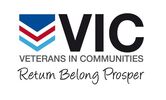Lower Chapel, Darwen
The Darwen Outreach team were approached by the Lighthouse Darwen to see whether VIC would provide some local support to help renovate and tidy up the grounds of a disused church that is being refurbished for community use. We were approached by the Princes Team Darwen Team 1 group who were looking for a local project as part of the community element of the programme. They liked the idea of helping VIC with making a veterans memorial garden on a plot of land within the chapel grounds. Work started at the beginning of April 2016 and they completed the removal of old bushes and weeds mid April, ready for the second phase of laying a base.
Lighthouse Darwen is a not for profit company limited by guarantee. Amongst the user of the Chapel are the Local History group, the Archaeology group, Morris dancers, dance and jazz classes, a worship fellowship. Repairs and refurbishments are underway, with part of the grave yard being cleared.
Lighthouse Darwen is a not for profit company limited by guarantee. Amongst the user of the Chapel are the Local History group, the Archaeology group, Morris dancers, dance and jazz classes, a worship fellowship. Repairs and refurbishments are underway, with part of the grave yard being cleared.
History
Lower Chapel building dates back as far as 1719 evidenced by the stone on the building was marked “1719.” The Lower Chapel stands in the part of Darwen known as “Chapels.” Lower Chapel was originally known as Heys Chapel according to the church register. The Higher Chapel which stands close by is now known as St. James Church.
In 1887, the Lower Chapel congregation held a bicentennial. At this time, they dated their congregation back to 25 Jul 1687 when King James II granted liberty and licensure to Nonconformist churches. Prior to that day, the congregation worshiped in the homes of William and Henry Berry, and prior to that, in barns and hills surrounding the village. Worshipers from Darwen, Tockholes and Haslingden worshiped on the hills and moors of the area going as far as Pendle Hill to Thomas Jollie’s Chapel.
Upon the declaration of King James II, the worshipers took over the Old Chapel, which was built as a C of E Chapel and remained for a year until they were ejected. In 1688, they reapplied for a public place of worship and worshiped in the barn at Bottoms, which became the original Lower Chapel. The Chapel took on the name of Lower Chapel because the other Chapel was on a higher ascent, though neither were in the mountains or banks of Darwen.
In 1887, the Lower Chapel congregation held a bicentennial. At this time, they dated their congregation back to 25 Jul 1687 when King James II granted liberty and licensure to Nonconformist churches. Prior to that day, the congregation worshiped in the homes of William and Henry Berry, and prior to that, in barns and hills surrounding the village. Worshipers from Darwen, Tockholes and Haslingden worshiped on the hills and moors of the area going as far as Pendle Hill to Thomas Jollie’s Chapel.
Upon the declaration of King James II, the worshipers took over the Old Chapel, which was built as a C of E Chapel and remained for a year until they were ejected. In 1688, they reapplied for a public place of worship and worshiped in the barn at Bottoms, which became the original Lower Chapel. The Chapel took on the name of Lower Chapel because the other Chapel was on a higher ascent, though neither were in the mountains or banks of Darwen.


